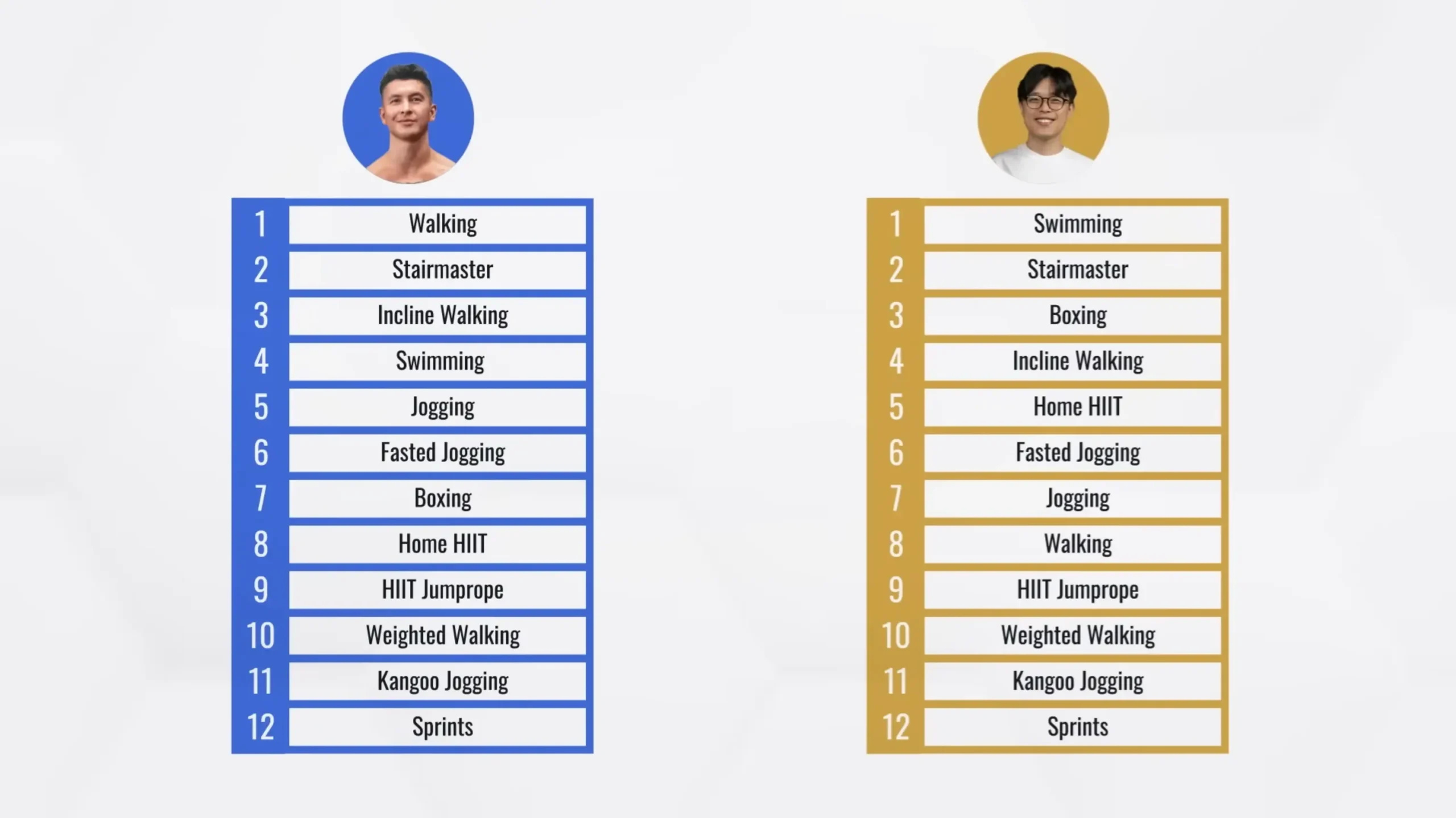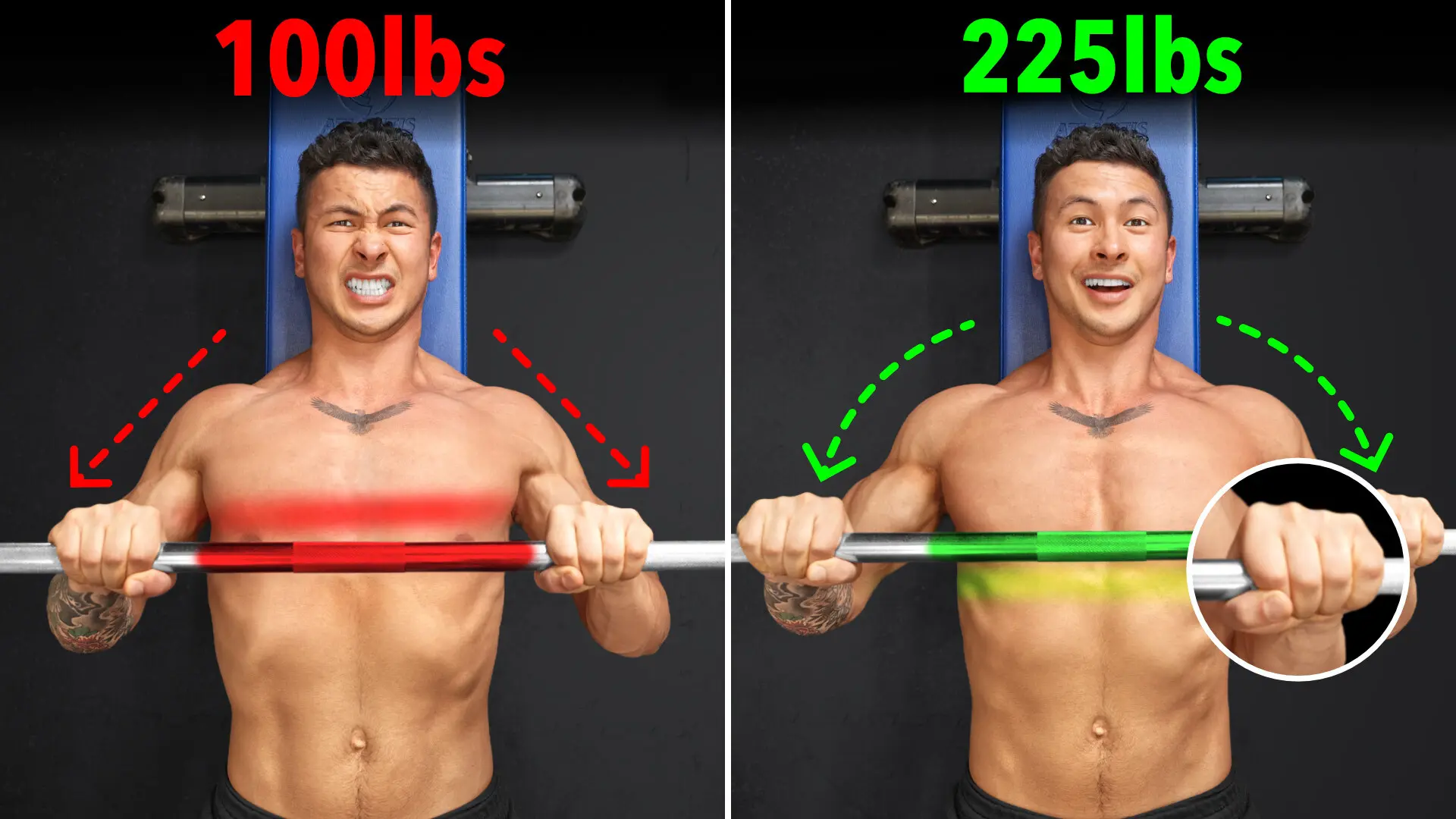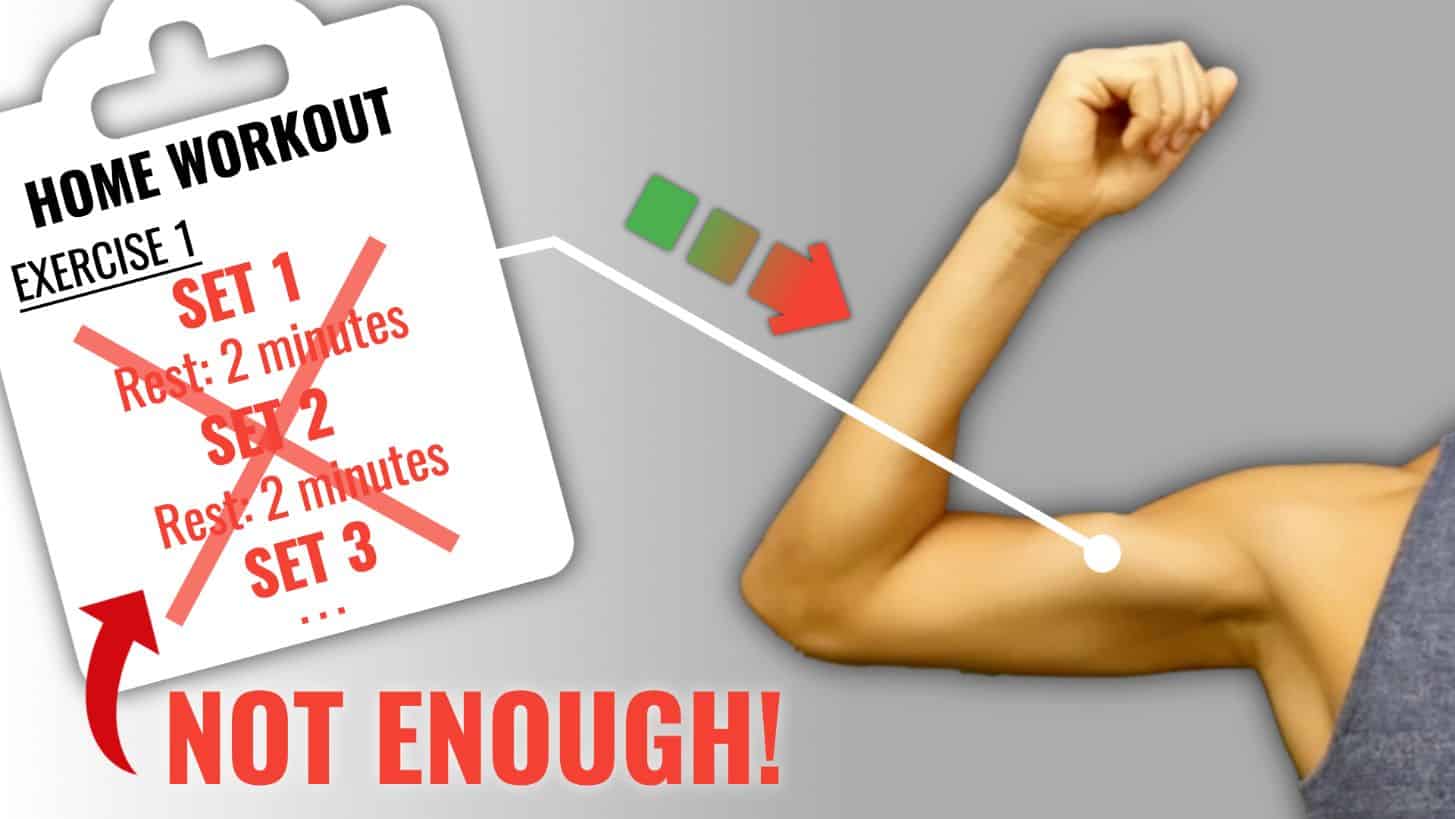
How To Build MORE Muscle At Home (4 Science-Based Methods)
How can you build more muscle at home? Read on to find out. In this article, I cover 4 science-based methods (and workout tips) that'll raise the effectiveness of your workouts at home.
Want to build more muscle at home? Well, first - do you know what one of the biggest challenges with home workouts is? Well, it's that if we don’t have the right equipment or access to a good amount of weights, it becomes increasingly difficult to get the same level of muscle stimulation and growth that we get at the gym with heavyweights. And this becomes worse and more problematic if:
- You’re not a complete beginner anymore (you have some training experience under your belt) AND
- You’re seeking to maintain or even continue building muscle at home. Or, whenever you’re limited in terms of equipment.
Why exactly is this the case though?
Well, there’s one main reason why training in the gym with heavier weights is typically “superior” for muscle growth when compared to home workouts.
And that has to do with something called mechanical tension. Which we know is the main driver of muscle growth. And how do we maximize mechanical tension? Not to mention, the resulting growth from an exercise? Here's the answer. You need to be able to recruit as many muscle fibers in your muscle as possible during as you perform that exercise.
Before that: if you're looking for a training program that'll always help you recruit as many muscle fibers as possible during each and every exercise, I've got just the thing for you. Every BWS program is designed to help you transform your physique in the most time-efficient manner. And best of all? It's all rooted in science. For more information on how BWS programs can help you to look better - FAST:
Click the button below to take my analysis quiz to discover the best program for you:
↓
Achieving Maximal Mechanical Tension Is Easy With Heavy Weights
This then ties into the beauty of having access to heavier weights in the gym. You’re able to maximally activate your muscle fibers by simply performing a relatively challenging set of 8-12 reps, for example.
This is in stark contrast to if you’re just training with your bodyweight or lighter weights, for example. Here, you aren’t eliciting nearly as much tension on your muscles as you are with heavier weights. And as a result, your muscle fibers won’t become fully recruited unless you really push to take your sets to near failure by performing a ton of reps.
And even then, research has shown that if:
- The weight or resistance used just isn’t challenging enough AND
- Your rep range per set gets too high as a result
...Then muscle growth will be compromised.
Regardless, You Can Maximize Muscle Growth With Metabolic Stress
However, don’t lose hope as there are a couple of solutions to this.
It does become more difficult to fully activate our muscles with lighter weights. But there are ways that we can manipulate our sets and exercises to ensure that we’re still able to fully stimulate our muscles. And that's without having to do a ridiculous number of reps every single set!
And on a similar note, remember I mentioned earlier that mechanical tension is the primary driver of muscle growth? Well, don't forget about metabolic stress. It's another pathway for growth that we can now take advantage of and emphasize in several ways.
And in this article, that’s exactly what I’ll show you how to do with 4 science-based methods. When these are properly applied, you'll be able to build muscle more effectively with your home workouts.
Method 1: Overcoming Isometrics
The first method is something called overcoming isometrics. This is a brutal home workout method that was first brought to my attention by coach Eugene Teo. All you need is a towel and a napkin to wipe the tears off your face after these grueling sets. But, basically, here’s how it works.
Let’s say you’re about to perform a set of banded or lightweight squats. Obviously, these won't typically challenge you as much as squats in the gym with heavy weights would. What you can do to compensate for this is first perform a squat isometric before you go into your set. Here's how:
- Simply wrap a towel or bed sheet under your feet and wrap it around each of your hands.
- Then, use your legs to push up with maximal effort against the immovable resistance.
- Keep this up for 20-30 seconds. You can even elevate your heels on books to increase the demands placed on the quads.
- Then, after you just can’t stand it anymore, immediately go right into your set of lightweight squats.
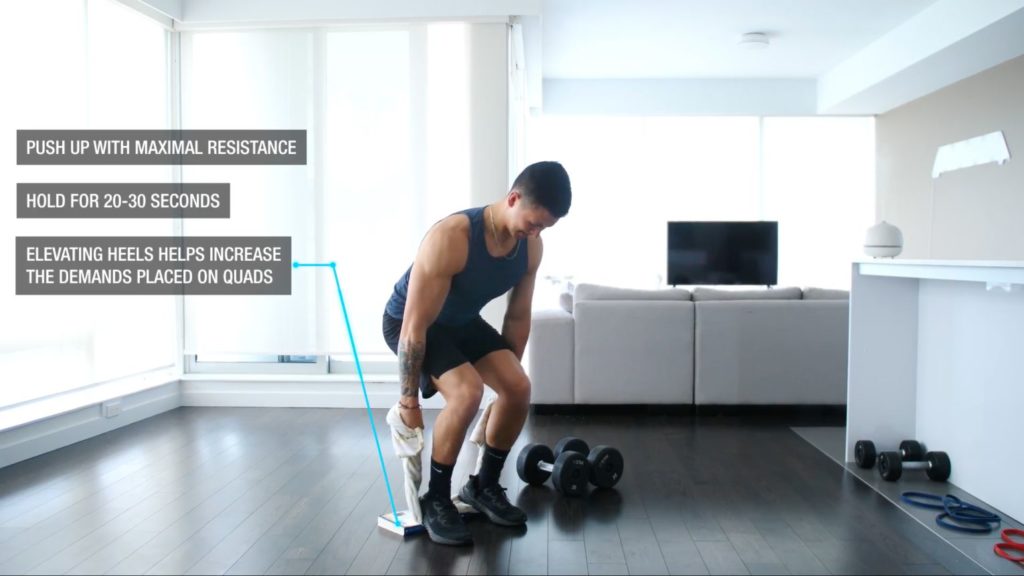
Chances are, you’re not going to be able to perform nearly as many reps as you normally would be able to. And that's because of the added fatigue and metabolic stress in the legs caused by you overcoming isometric before that.
You Can Use This Strategy With Other Muscle Groups Too
And this isn’t just limited to squats. You can perform this before any lighter leg exercises you do at home. And you can even perform these overcoming isometrics with other muscle groups, like before performing:
- Lateral raises - You can perform a shoulder isometric like so.
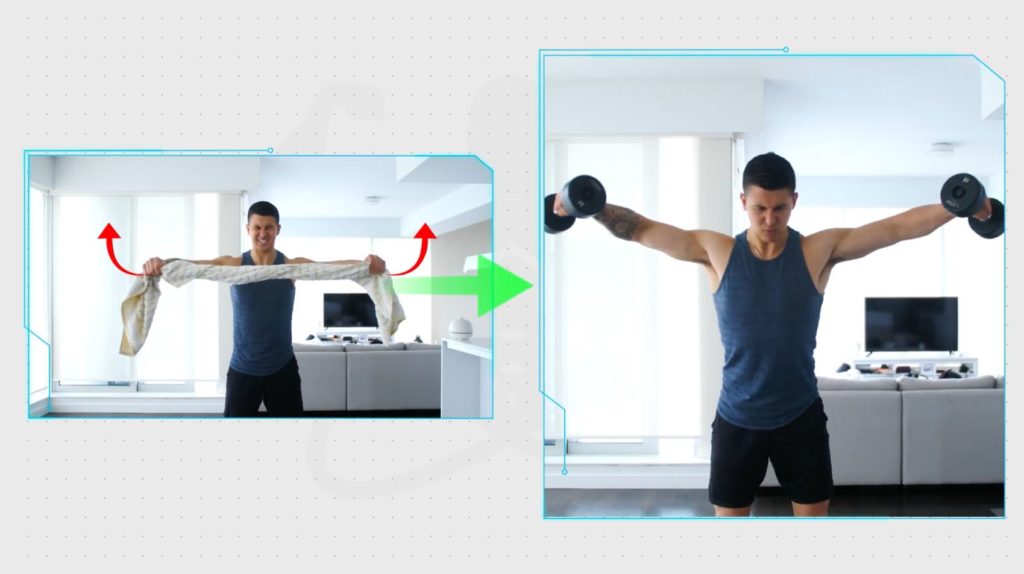
- Biceps curls - You can perform a biceps isometric like so.
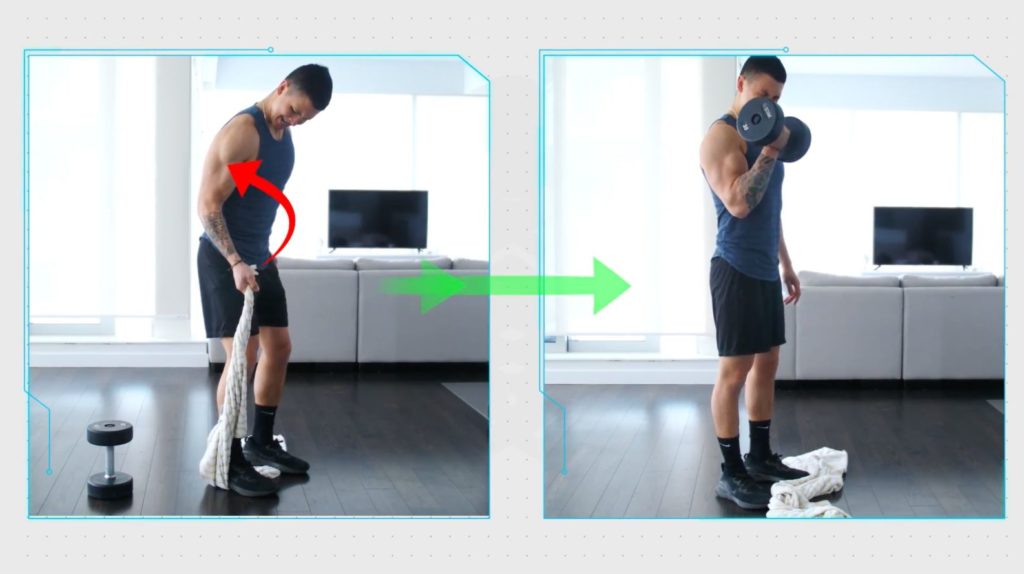
- Back movements - You can perform a back rowing isometric like so.
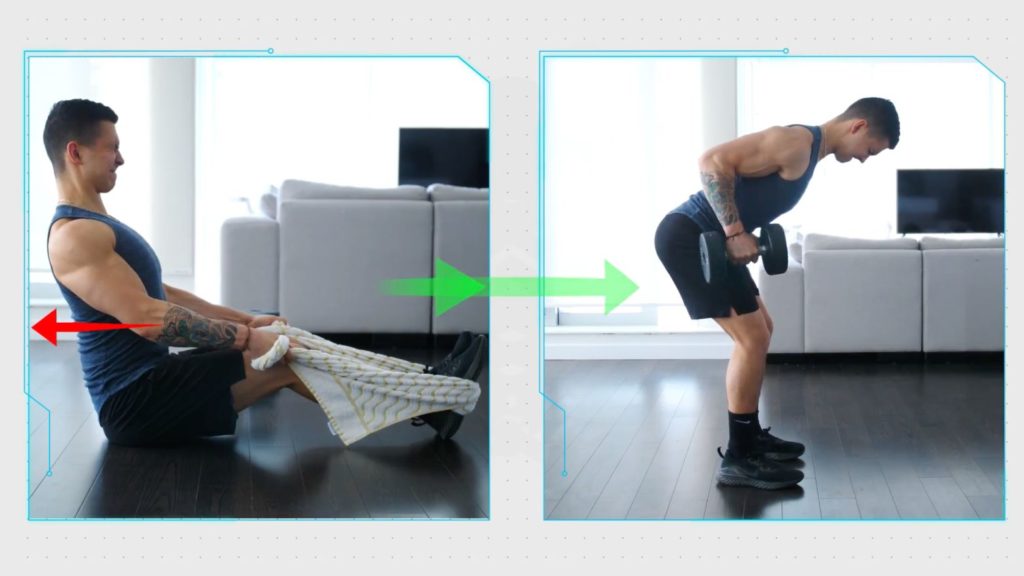
It works for virtually every one of your muscle groups. And is just an effective way of ensuring that you’re able to activate all of your muscle fibers and accumulate more metabolic stress during your sets with lighter weights. Incorporating it into your training will help boost the growth you experience from those sets.
Method 2: Rest-Pause Sets
Next is a method that has to do with how we go about executing our sets. And it is something called rest-pause sets. Which, when compared to traditional sets over a period of 6 weeks, has been shown to provide a slight benefit to muscle growth. This is especially for the lower body.
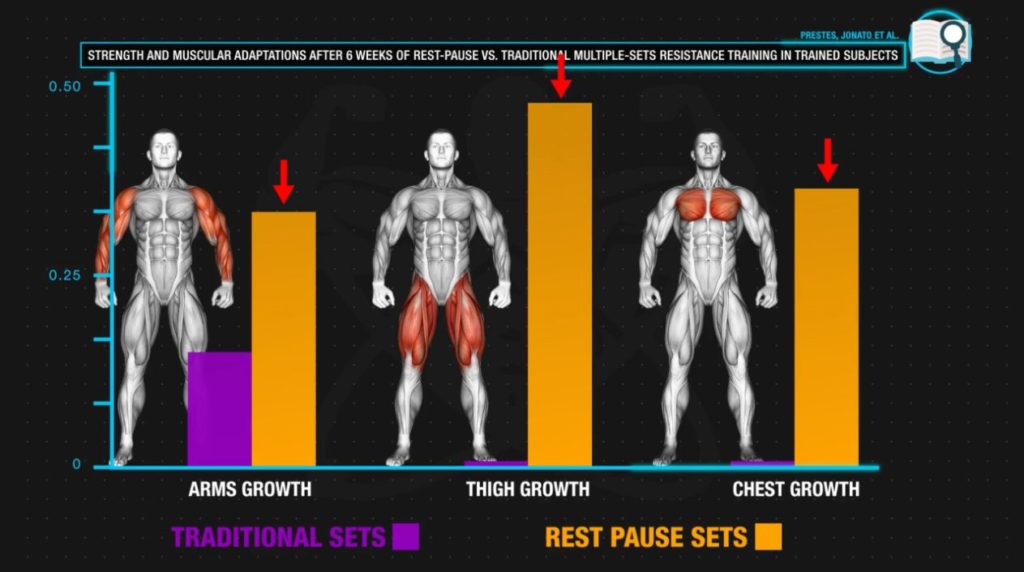 But why, you ask? Researchers suggest that it's because rest-pause sets help us push closer to failure during our exercises. And it's not just that. It's also thought to boost the level of metabolic stress we experience, too.
But why, you ask? Researchers suggest that it's because rest-pause sets help us push closer to failure during our exercises. And it's not just that. It's also thought to boost the level of metabolic stress we experience, too.
And how it works is as follows. So, traditionally what we do with our sets is:
- We’d perform a set of 10 reps for example
- Then rest for a couple minutes
- And proceed to our next set
- Rest again
- And then proceed to our last set if we’re doing a total of 3 sets
By the way, if you’re someone who enjoys learning about the ‘whys’ of training programming, you’re absolutely going to fall in love with our 3-on-1 coaching program. My team of experts here at BWS – and I – will always take the time to explain the rationale behind every single aspect of your personalized training (and nutrition) program. Find out more about how we can help you achieve your dream physique below:
Click the button below to find out more about the 3-on-1 coaching program:
↓
How To Perform Rest-Pause Sets To Build More Muscle At Home
With rest-pause sets, though, what you’d do instead is basically perform just 1 extended set instead of 3 total sets:
- You’d perform your first set until failure or close enough to it
- Note down how many reps you got. In this case, let’s say you got 20 reps.
- Then, you would stop and rest for just 20 seconds
- And then go right back into the exercise and again take it as close to failure as you can
- And note down how many reps you got there
- Then, you keep repeating this short rest and work cycle UNTIL you manage to match the number of reps you got in your first set, so in this case 20.
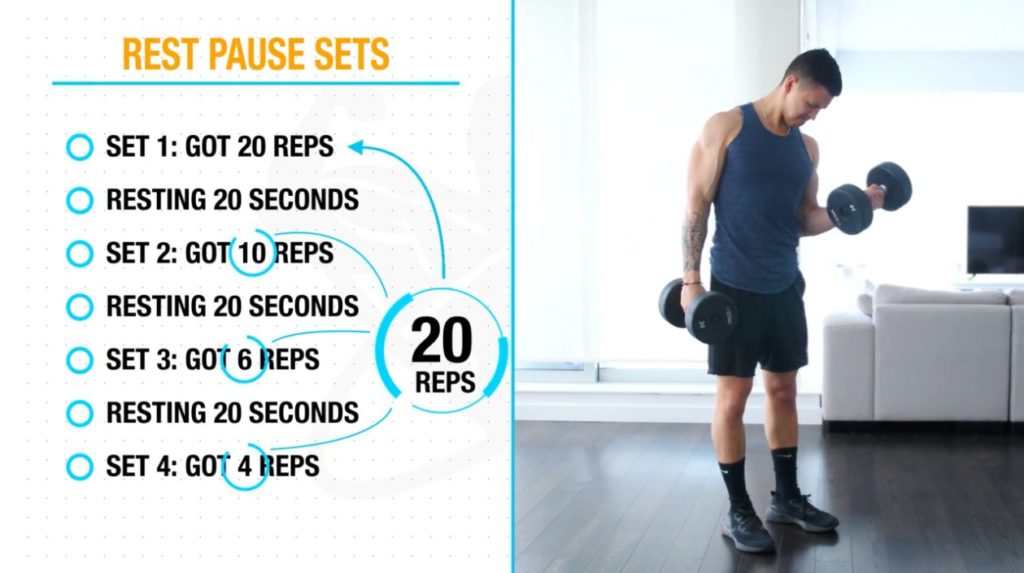
The benefit of executing your sets in this fashion is not only that it saves time, but for many individuals, it mentally pushes you to get closer to true failure than you would have otherwise. While, at the same time, considerably boosting the metabolic stress in your muscles.
These are both important for muscle growth, especially when working with lighter weights. Now I wouldn’t typically advise you to perform your heavy compound movements in the gym in this fashion. That's because it can get risky and counterproductive when you're working with heavier weights. But for home workouts where you’re limited to lighter weights and minimal equipment, it’s a viable way to increase the difficulty of your sets. Thus, helping you build more muscle at home.
Method 3: Squeeze Your Muscles… HARD!
The next method has to do with boosting the activation of your muscles during each set. This is truly the most effective way to build muscle at home without weights.
It's true that we may not be able to add more weight to an exercise to provide more tension to the muscles. But here's the thing. We can instead increase the demands of the muscle by mindfully squeezing the target muscle as hard as possible during, and in between each rep. What this does is it helps elicit a little more:
- Metabolic stress
- Fatigue AND
- Tension
To that muscle in order to signal it to get better despite using the same load.
And in fact, illustrating the power of this method is a 2016 study that had subjects perform “curls" with one of their arms with no weight. And they instead contracted their biceps as hard as possible in a curling motion for 4 sets of 20 reps three times a week. Whereas in the other arm, they used a weight equivalent to 70% of their 1 rep max. And they performed that for 4 sets of 8-12 reps three times a week.
After 6 weeks, the researchers measured the growth in each of their arms and found that both subjects experienced the same amount of growth. And as stated by the researchers, the high levels of muscle activation in the biceps produced from the repeated strong contractions seemed to provide sufficient stimulation of their muscles for growth. Even when no weight was used!
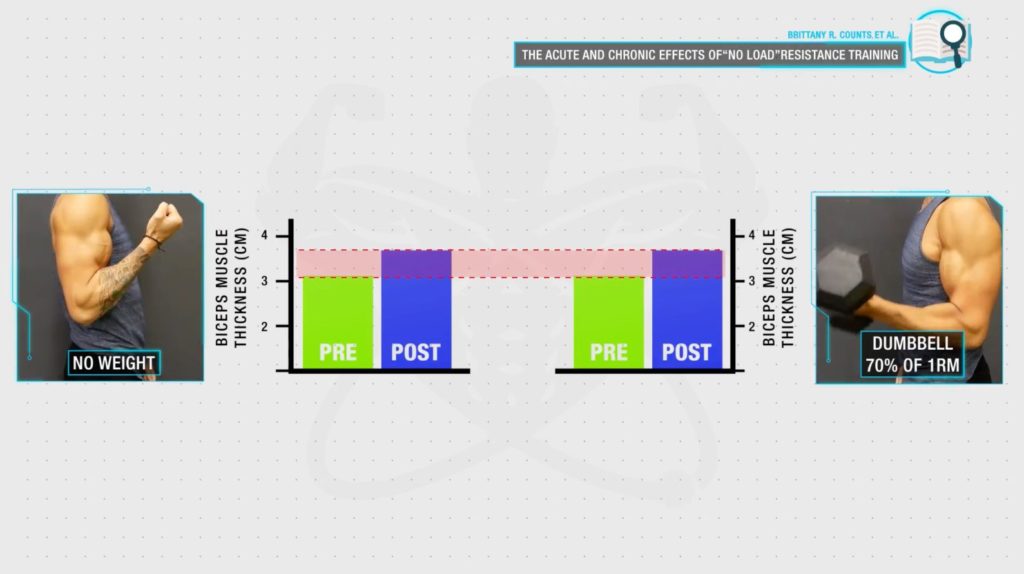
Admittedly, these were untrained subjects, Regardless, it still goes to show you the potential power of forcefully contracting your target muscles as you train them. And this is especially when you’re limited to lighter weights.
Build More Muscle At Home By Forcefully Contracting Target Muscles
So, here's my suggestion for an exercise like curls. Instead of just mindfully curling the weight up, focus instead on contracting your biceps as hard as possible as you do so. And for something like dumbbell squats, focus on squeezing the quads forcefully throughout your squat and at the top position between each rep as well.
What you’ll notice is that when properly applied to your various exercises, you won’t be able to do nearly as many reps as you could do previously. And that's because of the heightened level of fatigue and metabolic stress in your target muscle. Which will, as a result, lead to better growth from those sets.
Method 4: Combine Bands & Weights
The fourth and final method is to combine the various equipment you have available. Because odds are, most of you have light weights and some kind of band laying around at home. Now, the lightweights on their own may not be challenging enough for growth. But by throwing a band into the mix, it now becomes increasingly challenging. And it might be to the point where you’re able to fatigue your muscles to a greater degree despite using lighter weights.
Besides, the added benefit about using bands to accomplish this is that they complement the resistance curve of many of your exercises very well. They do so by providing a progressively increasing resistance to provide resistance in parts of the exercises where there would normally be none.
So get creative with it and implement bands wherever you can. For example,
- Biceps curls
- Dumbbell squats
- Split squats
- Dumbbell floor press
- Romanian deadlift
Remember, tension is tension. And your muscles are going to respond and grow in the same way regardless of whether you add more tension with a band or add more tension by using heavier weight.
So, what I’d recommend is experiment with implementing some of these methods into your home workouts as you see fit. Especially in exercises where you’re quite limited in terms of equipment and struggling to make them challenging enough on your muscles. And if you’re feeling up to the challenge or just have a weird thing for pain, feel free to even combine all 4 of these methods into your sets. Just please, make sure you have the Kleenex handy.
How To Build More Muscle At Home: Takeaway
Hopefully, you now know the answer to 'Can I build muscle at home without weights?' The answer is yes. Regardless, I also hope you can see that despite how limited you are with your home workouts, there are ways that you can manipulate the way in which you perform them. Which then helps increase the level of growth you experience from them.
And it's key strategies like these that make all the difference in terms of the effectiveness of home workouts.
Unfortunately, this is something that most home workouts miss the mark on. That’s why within my Built With Science programs, I've designed the home workouts included such that regardless of what equipment you may or may not have available, you can continue to maximize your results and build more muscle while working out at home.
And therefore, when used in tandem with the gym-based program, you can seamlessly transition between your home workouts and your gym-based workouts whenever you please. To find out which program would be best for you, simply:
Click the button below to take my analysis quiz to discover the best program for you:
↓
Don’t forget to give me a follow and connect with me on Instagram, Facebook, and Youtube as well, in order to stay up to date with my content.


